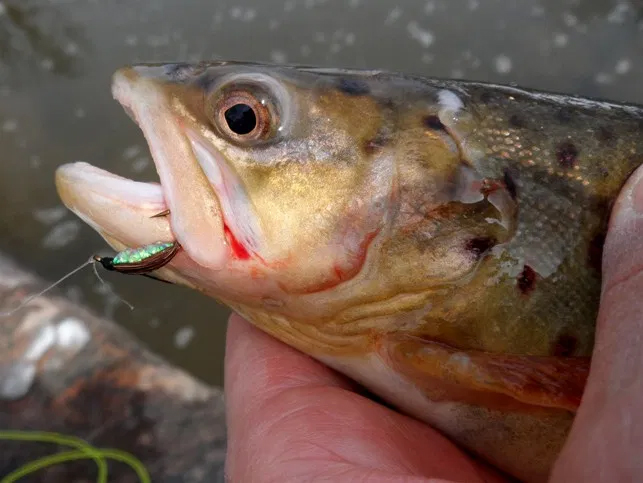
Throughout the upper Midwest, stocking trucks will be hitting area waters with this season’s set of rainbow, brown, and other species of trout, providing anglers a unique opportunity which may only exist naturally in those flows a half day’s drive away. While targeting stocked trout in pits, ponds and small impoundments may not be the same as wading in the cool spring-fed waters of a driftless region creek or along the walls of a Black Hills canyon, the experience is a ton of fun and a highlight no matter where these fish are be found.
For those starting out on the fly rod, stocked trout can make for a great first outing, no matter what condition a beginner’s cast might be in. Tie on any one of these helping handful of flies to find almost immediate success this spring with stockers.
Bug Out
The woolly bugger is an ideal beginner’s fly, because it’s easy to tie and easy to fish. Simply cast it out and strip it back, pausing here and there to ring the dinner bell for hungry fish fresh off the truck which are acclimating to their environment. Use those buggers with bead heads to get down a bit deeper, and pick patterns which have natural colors, particularly brown or olive, which tend to be most enticing to these fish which have been fed a diet of pellets for the past few months. In that same vein, keep buggers a bit on the smaller side for stockers, using size 8-12 to get the job done, and feel free to trim the marabou tail some to prevent short-striking.
Shwapf Meet
The swept-hackle wingless all-purpose fly (SHWAPF) is a great general imitator of some sort of aquatic insect and can be easily tied in a variety of color patterns to add more realism to a presentation. Generally, though, it’s in that half-inch-brown-and-buggy category, and when made with pheasant tail fibers folded over peacock herl, it’s tough to beat. Fished in the surface film, or twitched just below it, the SHWAPF is an easy snack for trout as they start to eye the surface after their release. These flies in size 10-14 are must-haves for any stocked trout fly box.
PTN Me ASAP
The pheasant tail nymph is designed to imitate mayfly larvae, those little bugs that can be found on the undersides of rocks or stuck to sticks and other aquatic debris pulled up from the bottom. Soon enough, those insects will be headed to the surface to change into their adult forms and fly away, but in the spring they’re easy eating for stocked trout. Pheasant tail nymphs are easily customized and when fished in freefall with an occasional twitch, they can set stockers off and elicit a strike in sizes 12-16.
Skitter Success
By late May, most stocked trout have settled into their adoptive waters and they begin to take notice of hatching insects. Coincidentally, caddisflies begin moving about on shoreline vegetation around that time, and these bugs and their haphazard flying techniques along the surface draw the attention of trout. It’s not unusual on a calm evening to see the water explode behind a fleeing caddisfly three or four times before the fish finally catches it. For that reason, the highly buoyant elk hair caddis dry fly skittered across the glass ceiling of any stocked trout water is a fun pattern to fish. In sizes 12-16, the dry hackle and hollow elk hair keep the dry fly afloat and the excitement coming with each cast.
Geronimo!
Finally, a solid parachute hatcher dry fly will provide an offering that no fish can resist. Imitating a hatching mayfly or other insect stuck in the surface film and trapped between two worlds, these patterns represent a bug at its most vulnerable point, which also happens to be when trout rise to eat them. A parachute dry fly, with its hackle splayed flat lets the butt of the pattern hang below the surface and provides a nice white (or other colored) post of yarn that any angler can see, at least until it’s gobbled up by a feeding trout.
These five flies and their closest of kin will work wonders on stocked trout. Experiment with them, their variants and other similar patterns to find what works best on a water and what colors are ideal. Don’t get lost in the idea of matching the hatch exactly just yet, as stocked trout may not be as discerning as their wild cousins, but that’s also what keeps the action going and rewards new prairie fly anglers for their efforts.
